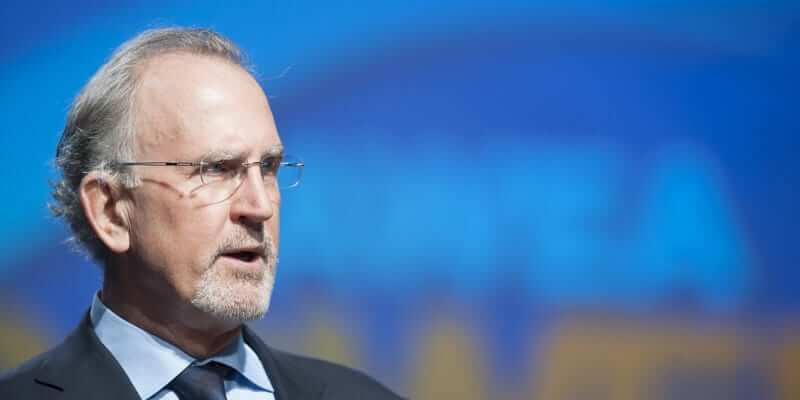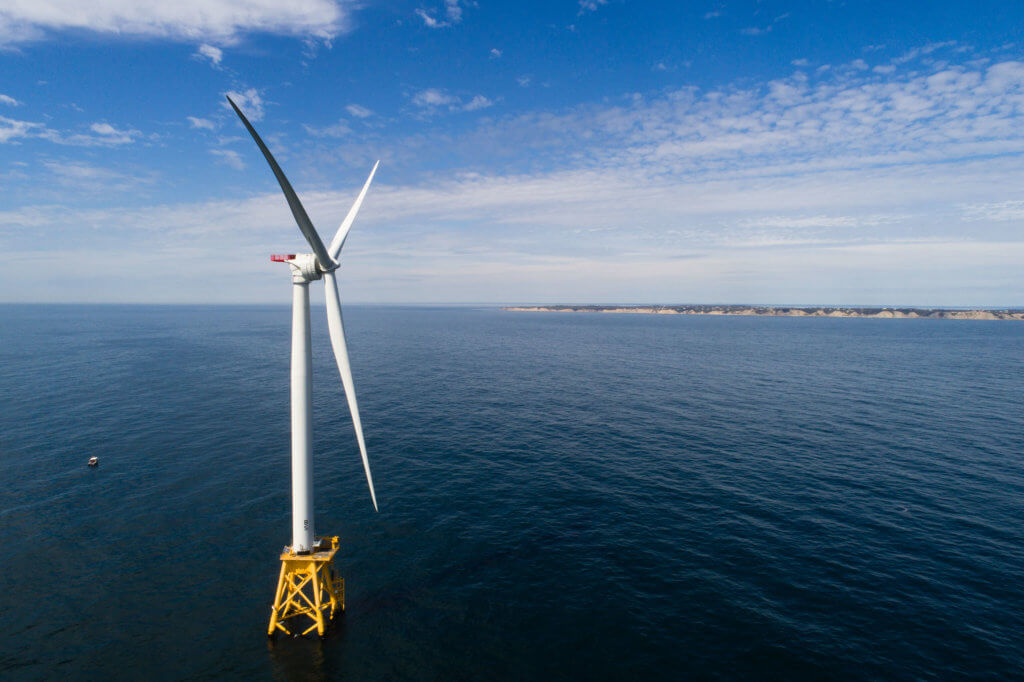Industry leaders: “Get the word out” about the power of wind
The wind energy industry must get across its good-news story to the nation and decisionmakers as it continues to drive down the cost of its product by as much as another 25 percent and push for appropriate and stable policy, industry leaders said at the WINDPOWER 2015 Conference & Exhibition in Orlando, Fla.
“We are not just building for today, but we are preparing for the long run,” new AWEA Board Chair Michael Garland told Wednesday’s General Session audience.
Garland urged wind industry members to do their part in ensuring that Congress extends the federal Production Tax Credit (PTC) for wind energy. He also underscored the importance of protecting and strengthening state renewable portfolio standards and ensuring a level playing field with other energy sources, such as having access to the same financing mechanisms as such sources. Garland noted that Jeb Bush, former governor of Florida and potential presidential candidate, has already come out in favor of a multi-year extension of the PTC and that “it’s the industry’s job to make sure other candidates do the same.”
The PTC has lowered the cost of capital for new wind farms, contributing to the reduction in the cost of wind energy by 58 percent between 2009 and 2013. Participants in the General Session’s Wind Industry Leaders Panel said more cost reduction is coming. Moderator Garland asked the panelists if the industry could drive down the cost another 25 percent.
“58 percent over five years,” said Vestas President Chris Brown to express his confidence that the falling costs we’ve seen can continue. “Enough said.”
Also optimistic, NextEra Energy Resources Senior Vice President of Development Michael O’Sullivan pointed out that cost improvements will be incremental. “It’s not going to happen with one giant drop,” he explained.
Jim Murphy, CFO and COO at Invenergy, LLC, pointed out that the 25 percent reduction cannot come from turbine cost alone but that it must come from other areas such as project cost as well.
Mortenson Construction Vice President and General Manager Tim Maag said that while the project construction segment has made much progress, “we still have a long way to go.”
Maag said efficiencies can be realized by changing the way of thinking behind project construction. Building wind farms will increasingly be thought of as a manufacturing process rather than a construction project, since it involves a great deal of repetition, he said.
Conveying wind’s powerful story to the public was a theme throughout the General Session. Jonah Berger, Wharton School of Business faculty member and best-selling author of “Contagious: Why Things Catch On,” explaining that word-of-mouth is twice as important as advertising and happens mostly in offline, face-to-face conversations. Berger urged audience members to “show, don’t tell,” when sharing the value of wind energy, and to wrap simple messages in stories rather than reciting facts.
In that regard, Berger underscored the power of storytelling, and in fact the General Session offered plenty of examples. Appearing on stage immediately afterward was John Dudley of Comanche, Texas, whose ranch has been in the family for over 100 years and is now hosting a wind farm.
Dudley and his wife Ginger were among the “Faces of Wind,” who also featured some of the thousands of American military veterans now working in wind energy. Siemens’ Brit Saboe personified the industry’s commitment to hiring veterans and was flanked by other veterans among her coworkers. AWEA is now participating in Joining Forces, which works to ensure that service members, veterans, and their families have the tools they need to succeed throughout their lives. When she invited other veterans in the audience to stand up as well, hundreds rose to their feet to take a round of applause.
The Wind Industry Leaders Panel spent much of their allotted time talking about how to best convey wind’s powerful message. Of best-selling author Berger and his focus on “tasty” messages, Enel Green Power North America’s Chief Commercial Officer Michael Storch said, “I think he’s going to be my new best friend.”
Panelists discussed wind’s most potent messages from being a great hedge against fuel price risk, saving consumers billions a year, to avoiding the use of precious fresh water. Seconding Berger’s word-of-mouth concept, Duke Energy Vice President Jeffrey Wehner urged his colleagues to spread the word about wind energy’s benefits—including how it’s helping to save family farms.
“I think it’s important to get that message out beyond these walls,” he said.





